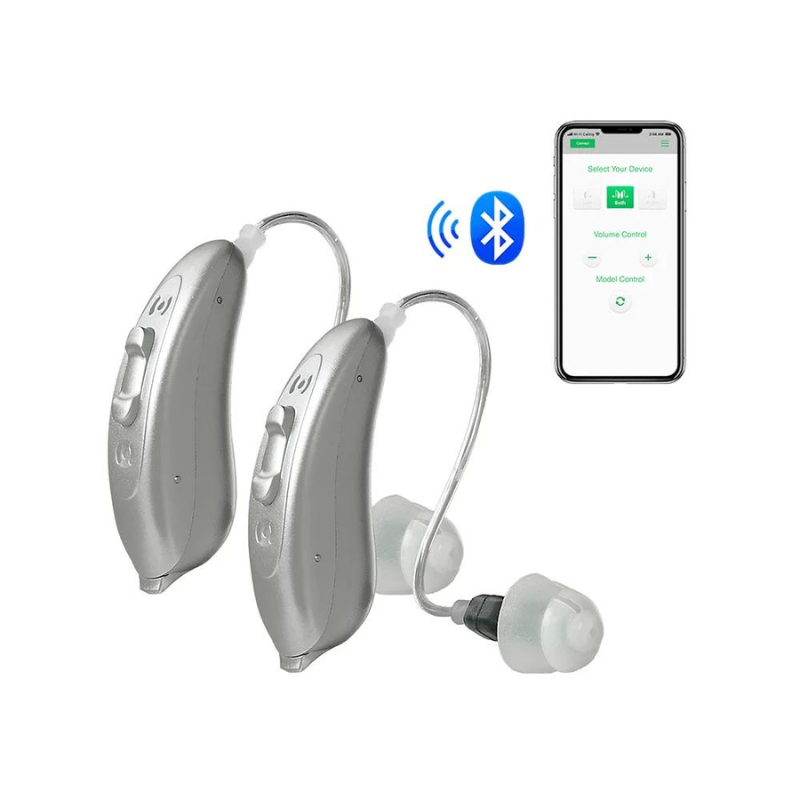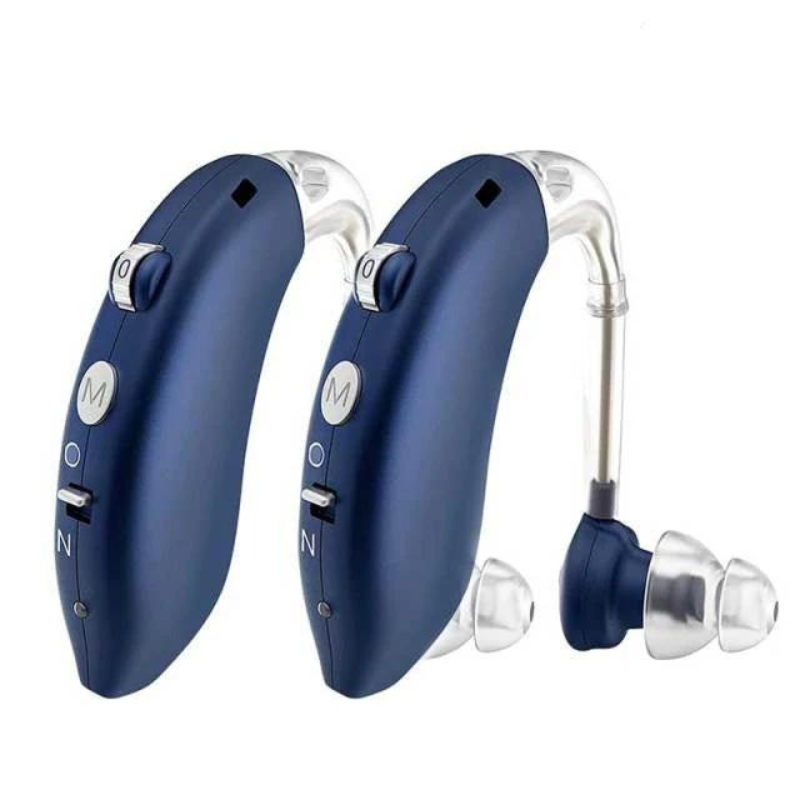The world has become a lot louder over the years. Traffic, rock concerts, sporting events, loud restaurants, and personal listening devices are all affecting the health of our ears.
Hearing loss happens naturally as we age, however it can also be caused from prolonged exposure to loud noises, trauma, medication, or illness.
Hearing Health Matters
Many Canadians are unaware they are experiencing hearing loss, yet according to Statistics Canada over 60 per cent of Canadian adults between the ages of 19 and 79 who have been tested have a hearing health issue. Hearing loss is an invisible disability often equated with seniors and aging. As a result, the social stigma that surrounds hearing loss can prevent people from seeking treatment.
Living with untreated hearing loss can affect your mental and physical well-being. Hearing is an important sense. Sound connects us to our environment and the people around us. Think about a baby’s laugh, the waves crashing against the shore, your favourite song, a loved one’s voice; all these have a positive effect on our mood.
Without proper treatment, hearing loss can become permanent and lead to other health issues. “Untreated hearing loss can lead to isolation, and it has been associated with serious conditions such as depression, anxiety, low self-esteem, dementia, reduced mobility, and falls. Yet only one in four adults who could benefit from hearing aids has ever used them,” wrote The National Institute on Deafness and Other Communication Disorders.
Like a healthy inner ear, healthy hearing is important for balance. A JAMA Internal Medicine study showed that hearing loss may also directly limit the auditory cues necessary for environmental awareness.
Hearing loss also increases the risk of dementia by exhausting the cognitive function normally used for memory and thinking. Less social engagement leading to isolation due to difficulty hearing is also another factor that may contribute to dementia.
What are Hearing Aids
Hearing aids are devices that contain all the components needed to process sound. They consist of four components:
- A microphone that picks up the sound.
- A digital computer chip that amplifies the sound and removes background noise.
- A speaker that transmits the amplified sound to your ear.
- A standard or rechargeable battery for power.
There are two styles of hearing aids you can choose from. In-the-ear (ITE) and behind-the-ear (BTE). The style you choose can be based on the level of your hearing loss and your lifestyle. Once you determine the style, you need to decide what technology level you want; basic, advanced, or premium, depending on your budget.
Budget should not be an obstacle to purchasing a hearing device. You will experience improvement even with a basic model.
Not Your Grandmother’s Hearing Aids
Gone are the days of the ear trumpet. Innovation in hearing aids over the past 100 years has evolved and with the constant advancement of technology they have become smaller, more sophisticated devices.
Captioning and Hearing Glasses

Fashionable and stylish, hearing aid and captioning glasses offer a unique and innovative way to assist in hearing while taking away some of the stigma surrounding hearing loss and hearing aids.
Hearing glasses are equipped with built in hearing aids to help with clarity and eliminate background noise in a conversation.
Captioning glasses transcribe speech to text displayed on the lens so even though you can’t hear what the person in front of you is saying, you can see it.
Fitness Trackers and Fall Detection

Some hearing aids are now being designed to include fitness trackers and fall detection technology that can be set up via an app on your smartphone to monitor all your health statistics. They can even alert family members if you have fallen.
Considering the link between hearing and balance, this technology could help maintain balance longer and replace a fall alert bracelet.
AI Background Noise Detectors

Traditional hearing aids focus on the person speaking in front of you and eliminate background noise. Artificial Intelligence is now being used to train hearing aids in identifying and separating sounds to create a complete sound environment, while still considering your hearing loss.
With AI, hearing aids enable you to hear more of what is going on around you without muddling the background sounds.
Turning Earbuds into Hearing Aids

Hearing assistance apps are a way to turn your smartphone and earphones into hearing aids without an extra device. Whether your hearing is fine, or you suffer from hearing loss, these apps allow you to hear sounds much clearer.
Background noise is reduced, and the struggle to hear is eliminated. These apps are user-friendly making them accessible to everyone.
Bluetooth

Bluetooth technology allows you to pair your hearing aids directly with your cell phone, television, tablet, or computer without the need to wear separate earbuds.
Most manufacturers offer this feature in their hearing aids and using an app, you can control volume, change settings and even have your hearing professionals adjust your hearing aids remotely. This technology also allows you to locate your hearing aids if you have misplaced them.
Over-the-Counter Hearing Aids

Over-the-Counter hearing aids (OTC) don’t require a prescription from your doctor or audiologist. Consumers can purchase OTC hearing aids online or direct from stores without having to wait for an appointment or to be fit by a doctor.
These devices are not recommended for children or adults who have severe hearing loss. While the cost for OTC hearing aids is significantly lower than being professionally fitted by an audiologist, the quality of these devices may be lower. In Canada, these devices have not yet been approved by the federal and provincial governments.
Cost
The average cost of hearing aids in Canada ranges from $1,800 to $8,000 per pair depending on the type, style and severity of hearing loss. Each province and territory has its own approach to covering (or not) hearing aids so check with your local government to see if you qualify.
Hearing aids are generally not fully covered by most private health insurance, but some insurance companies may offer an optional hearing plan that includes coverage for hearing aids and fittings. Additionally, if you have a healthcare spending account you may be able to apply some of it to hearing aids.
To find out if you have private coverage, contact your insurance company. If you have no coverage at all, some hearing aid companies will extend financial assistance through payment plans.
Over the counter hearing aids can cost significantly less, with some coming in as low as $200, up to around $2,000. Applicable only for mild to moderate hearing loss, they are widely available in the US at stores like Walmart and Best Buy, but not yet here in Canada where they are only available at some audiology clinics. As they are not yet approved by Health Canada, they’re not covered by provincial medicare, but may be privately covered or financed per above.
When to Visit Your Healthcare Provider or Audiologist
- Speech or other sounds seem muffled.
- You ask people to repeat themselves or talk louder
- You turn up the volume on the television or radio to higher levels than normal
- You have problems understanding people when there is background noise (party, restaurant, event)
- Consonant sounds like “s”, “f”, “t”, “sh”, and “th” are difficult to distinguish.
- You hear a constant ringing, hissing, or whooshing in your ears that isn’t coming from an external source.
- Friends and family tell you that you should have your hearing checked.
Hearing devices have come a long way over the years. They are smarter, sleeker, and available in a variety of options. There are many designs and styles to choose from and can fit anyone’s lifestyle and degree of hearing loss.
Hearing health is an important part of our overall health and should be part of our regular doctor visits.
The information provided on TheHealthInsider.ca is for educational purposes only and does not substitute for professional medical advice. TheHealthInsider.ca advises consulting a medical professional or healthcare provider when seeking medical advice, diagnoses, or treatment. To read about our editorial review process click here.










